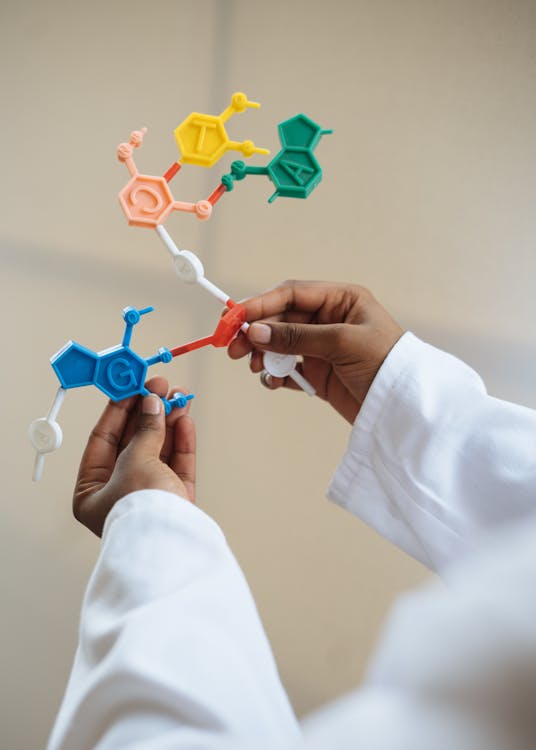Introduction
The field of oligonucleotide synthesis has witnessed remarkable advancements in recent years, driven by the growing demand for nucleic acid-based therapeutics, diagnostics, and research tools. These technological breakthroughs have significantly improved synthesis efficiency, reduced costs, and enhanced the quality of oligonucleotide products. In this article, we explore the most promising recent developments in oligonucleotide synthesis and their potential impact on the industry.
Novel Coupling Chemistries
Traditional phosphoramidite chemistry has been the gold standard for oligonucleotide synthesis for decades. However, recent innovations have introduced alternative coupling chemistries that offer advantages in specific applications:
H-Phosphonate Chemistry Resurgence
H-phosphonate chemistry, initially developed in the 1980s, has seen renewed interest due to its potential for large-scale manufacturing. Recent modifications have improved coupling efficiency and reduced side reactions, making it a viable alternative for specific applications, particularly those requiring phosphorothioate linkages.
Click Chemistry Applications
The application of click chemistry to oligonucleotide synthesis has enabled the efficient introduction of various modifications. Copper-free click reactions, in particular, have proven valuable for bioconjugation of oligonucleotides with minimal side reactions and high specificity.
Solid-Phase Synthesis Innovations
Advances in solid support technologies have significantly improved synthesis efficiency. New polymer supports with optimized loading capacities and reduced swelling properties have minimized side reactions and improved product purity. Additionally, developments in linker chemistry have facilitated more efficient cleavage and deprotection steps.

Automation and Throughput Improvements
The automation of oligonucleotide synthesis has undergone significant advancements, enabling higher throughput and improved reproducibility:
Microarray Synthesis Technology
Microarray-based synthesis platforms now allow for the parallel synthesis of thousands of unique oligonucleotide sequences on a single chip. This technology has revolutionized applications requiring complex oligonucleotide libraries, such as CRISPR guide RNA screens and aptamer discovery.
Flow-Based Synthesis Systems
Continuous-flow synthesis systems represent a paradigm shift from traditional batch processes. These systems offer improved reaction kinetics, reduced reagent consumption, and enhanced scalability. Recent developments in flow-based synthesizers have demonstrated significant improvements in coupling efficiency and overall yield for longer oligonucleotides.
Artificial Intelligence in Process Optimization
Machine learning algorithms are increasingly being applied to optimize synthesis parameters. These AI-driven approaches analyze large datasets of synthesis outcomes to identify optimal reaction conditions for specific sequences, improving yield and reducing impurities.
Scalable Manufacturing Processes
The growing demand for oligonucleotide therapeutics has driven innovations in large-scale manufacturing processes:
Liquid-Phase Synthesis Methods
While solid-phase synthesis remains dominant for most applications, liquid-phase methods have shown promise for large-scale production of specific sequences. Recent developments in solution-phase protecting group strategies have improved the practicality of this approach for multi-kilogram scale synthesis.
Continuous Manufacturing
The pharmaceutical industry's shift toward continuous manufacturing has extended to oligonucleotide production. Integrated continuous processes that combine synthesis, purification, and formulation steps have demonstrated potential for reducing manufacturing costs and improving consistency between batches.
Enzymatic Synthesis Approaches
Enzymatic methods for oligonucleotide synthesis have advanced significantly, offering a potential alternative to chemical synthesis for specific applications. Terminal deoxynucleotidyl transferase (TdT)-based approaches, in particular, have shown promise for the synthesis of long oligonucleotides with high accuracy.
"The convergence of improved chemistries, automation technologies, and enzymatic approaches is fundamentally transforming our capacity to produce complex oligonucleotides at scale. These advances are critical for realizing the full potential of nucleic acid therapeutics."
— Dr. Michael Lin, CTO, Girindus
Purification and Analysis Innovations
Advancements in purification and analytical technologies have kept pace with synthesis improvements:
Chromatography Enhancements
Ion-pair reversed-phase HPLC remains the gold standard for oligonucleotide purification, but recent innovations in stationary phases and mobile phase compositions have improved resolution and throughput. Supercritical fluid chromatography (SFC) has also emerged as a promising alternative with reduced solvent consumption.
Mass Spectrometry Advancements
High-resolution mass spectrometry techniques have dramatically improved the characterization of complex oligonucleotides. Ion mobility-mass spectrometry, in particular, has enhanced the ability to analyze modified oligonucleotides and identify sequence-specific impurities.
Real-Time Monitoring
Inline process analytical technologies (PAT) have been developed for real-time monitoring of oligonucleotide synthesis reactions. These systems enable immediate identification of failed coupling steps and quality issues, reducing waste and improving overall process efficiency.
Emerging Applications Driving Innovation
Several emerging applications are driving specific innovations in oligonucleotide synthesis:
Long Oligonucleotide Synthesis
The demand for longer oligonucleotides (>100 bases) for gene synthesis and CRISPR applications has spurred developments in ligation-based assembly methods and enzymatic synthesis approaches. These technologies are overcoming the length limitations of traditional solid-phase synthesis.
Modified Nucleosides for Therapeutic Applications
The success of mRNA vaccines has accelerated research into modified nucleosides that enhance stability and reduce immunogenicity. New synthetic methods for incorporating these modifications efficiently are an active area of development.
Oligonucleotide-Based Nanostructures
DNA origami and other nucleic acid nanostructures require precisely synthesized oligonucleotides with specific modifications. Advances in site-specific conjugation chemistries are enabling more complex and functional nanostructures for drug delivery and diagnostic applications.
Conclusion and Future Outlook
The field of oligonucleotide synthesis continues to evolve rapidly, with innovations addressing key challenges in scalability, cost, and product quality. As these technologies mature, we anticipate further democratization of oligonucleotide-based technologies and expanded applications in therapeutics, diagnostics, and synthetic biology.
At Girindus, we remain committed to implementing these cutting-edge technologies to provide our clients with the highest quality oligonucleotide products and services. Our ongoing research and development efforts focus on optimizing these advances for practical manufacturing applications, ensuring that we stay at the forefront of this dynamic field.
The future of oligonucleotide synthesis looks increasingly bright, with continued innovation promising to unlock new possibilities in precision medicine, genetic research, and beyond. As these technologies continue to mature, we expect to see even more transformative applications emerge in the coming years.



